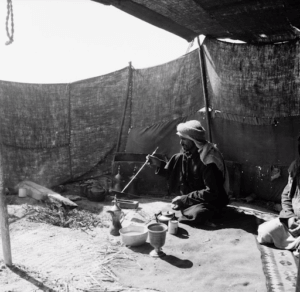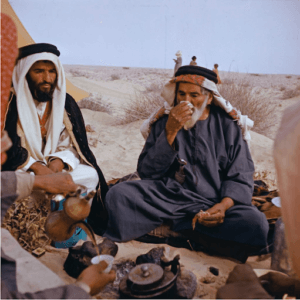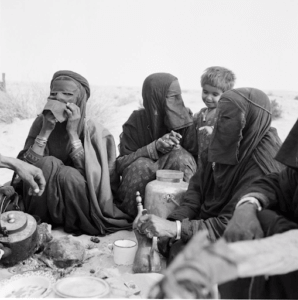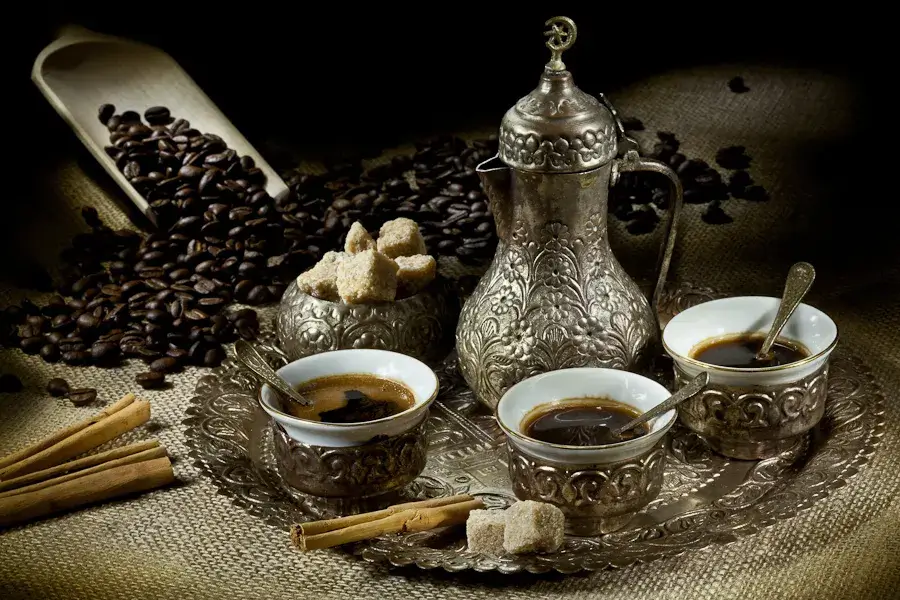The Tradition of Qahwa
This post was written by former QAIC intern Alisa Grishin. Alisa is a senior at Salem State University in Salem, Massachusetts. She is currently pursuing a BA in History with a concentration in Public History, as well as minors in Legal Studies and Political Science.
With coffee shops adorning nearly every street corner, it’s easy to forget about the rich culture that’s behind that iced caramel macchiato. Coffee has been an important part of cultures for centuries, just as it continues to be today. In the case of qahwa, or Arabic coffee, this beverage has been considered “a symbol of generosity” since the 15th century.
The UNESCO list of intangible heritage is a compilation of nonphysical traditions and living expressions that have been inherited from previous generations. Qahwa joined this comprehensive list in 2015 as an example of hospitality in the Arab world. To understand the significance of this beverage, one must look at the ritualistic process behind its brew.

A man preparing qahwa, 20th century. Image courtesy of National Museum of Qatar.
Traditionally, qahwa is prepared entirely in front of guests. The preparer needs several items: a coffee pot (khumrah), a roasting spoon (mihmas), a tray (mubarrid), a mortar and pestle (hawan wa yad al-hawan), a serving pot (mizal dallah), and small serving cups (fanajin). The preparation process can be broken into four steps:
- Roast raw coffee beans in the roasting spoon and boil water in the coffee pot over a flame.
-
Ground roasted beans with a mortar and pestle and add them to the boiled water. Add cardamom to the pot; saffron and rosewater may also be added. Keep over fire until fully brewed.
-
Pour boiled coffee into the serving pot.
-
Serve coffee into the small serving cups.
The oldest or most distinguished guest is served first, receiving a cup of qahwa filled about a quarter of the way. It is customary to drink at least one serving of qahwa, with three servings being the optimal amount. When the guest has had enough, they shake their cup to indicate that they are done.

Men drinking qahwa, 20th century. Image courtesy of National Museum of Qatar.
The practice of serving qahwa as a means of hospitality can be seen in the United Arab Emirates, Saudi Arabia, Oman, and Qatar. It transcends social status, age, and gender by being a communal engagement that shows respect for all.
This practice has been upheld for generations by taking the time to teach younger generations the importance of this tradition. With the additional protection of being on the UNESCO Intangible Heritage list, it’s clear that the love for coffee and community is here to stay.
To learn more about the history and culture of qahwa, you can watch UNESCO’s video here.
To learn how to make qahwa on your own, click here.

Women drinking qahwa, 20th century. Image courtesy of National Museum of Qatar.
Cover image courtesy of Arab America.

